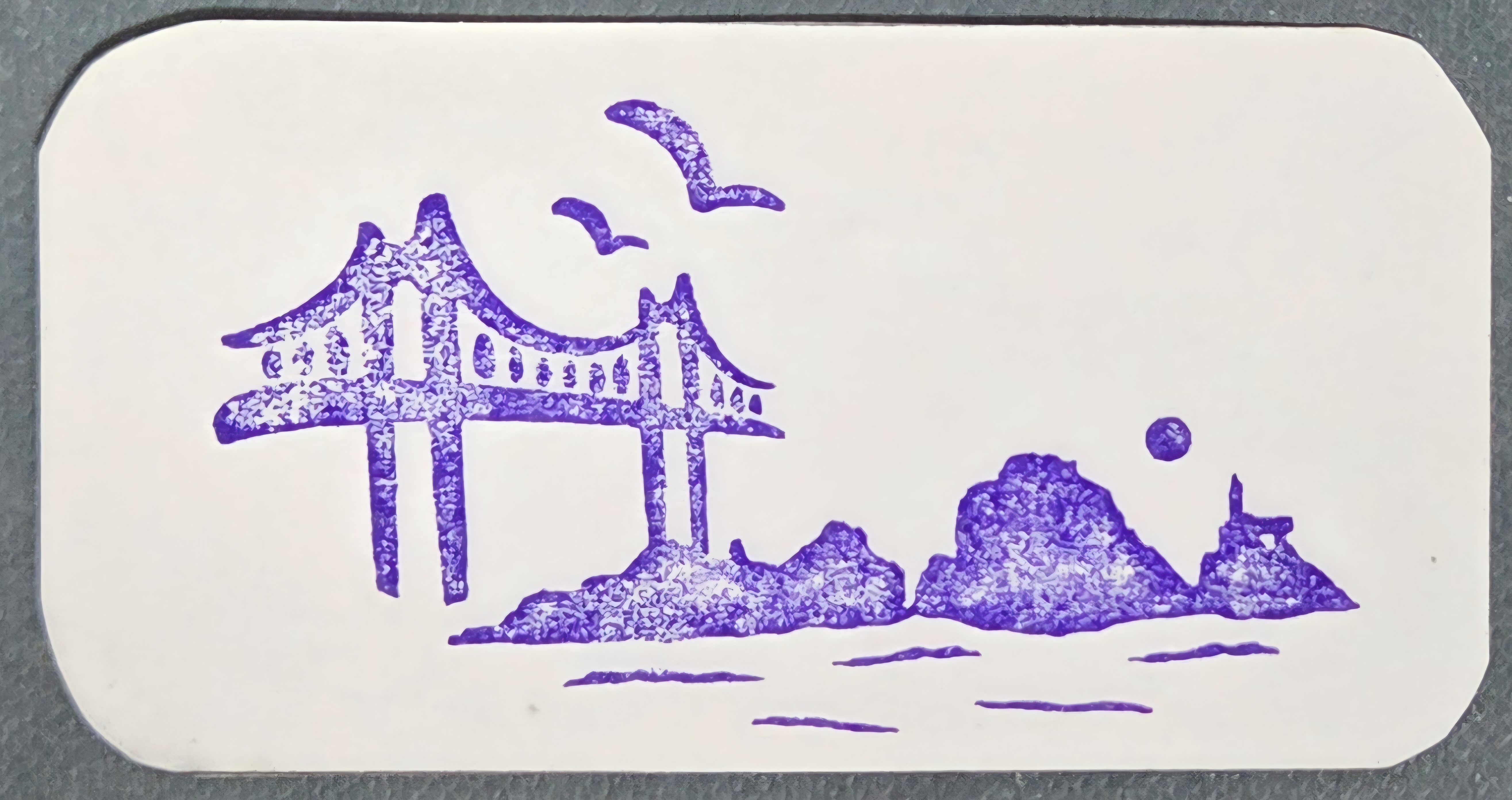1962년 벚꽃의 원산지에 대한 논쟁이 한일 간에 있었다. 1962년 4월 19일 ` 일본국화 왕벚나무의 원산지는 제주도` 라는 기사가 동아일보에 실렸다. 다음에 4월에도 ` 왕벚나무 원산지는 역시 한라산 ` 이라는 기사가 실렸다. 일본에는 자생하는 벚나무가 없었다. 1965년 한국정부는 한라산에 자생하는 왕벚나무를 천년 기념물로 지정했고 원산지 논란은 끝나는 것 처럼 보였다. 벚나무 종류는 다른 벚나무 종과 쉽게 교잡 할 수 있어서 그 기원을 밝히기가 어렵다. 이리저리 퍼져나간 종류만 200여종이 있다. 일본은 본국과 한국에서 자라는 왕벚나무 모두 재배종 이라 했다. 한라산에 자생 왕벚나무가 있는 것은 맞지만 이 역시 일본에서 교잡해서 생겨난 재배종 이라고 맞선다.
1960년대 들어 정권을 잡은 박정희 대통령이 벚꽃을 사랑했다. 매년 4월이면 진해 공관에서 머물며 휴가를 보냈고 정부요원이나 외교사절을 진해로 초대해 회담이나 행사를 했다.
1976년 4월 해군사관학교 졸업식을 참석한 뒤 진해시장을 만난 박정희는 " 가로수 뿐만 아니라 산이나 들에도 심을 수 있는 곳에는 모두 벚나무를 심어서 진해를 벚꽃의 명소가 되게 하라 " 라고 지시 했다. 이승만 시절 벚꽃 관리 예산이 모두 삭감된 반면 박정희는 벚꽃을 어디에 심으라고 직접 지시할 정도 였다.
서울 강변북로 벚꽃도, 국회의사당 뒷길 벚꽃도 아마 그럴 것이다.
진해시는 꾸준히 벚꽃을 심었고 도시 곳곳에 퍼져 있는 벚나무가 36만 그루에 이른다. 경상남도 전체에서 자라는 벚나무가 81만 그루인데 그중 40%이상이 진해에 몰려 있는 셈이다. 2014년 12월에 전국 최초의 벚꽃테마 공원도 생겼다.
방사형도시 진해
방사형 도로 유럽도시에서 아주 흔히 보는 유형이다. 도시 전체에서 가장 중심이 되는 지점을 두고 그 곳에서 도로가 뻗어 나간다. 파리의 개선문, 런던, 로마, 호주 캔버라, 인도 뉴델리 등이 비슷한 도시이다. 일제는 1912년 진해를 국내최초의 방사형도시로 만들었다. 도시에 세개의 원인 그리고 중원, 북원, 남원 이라하고 중십, 북십, 남십 으로 큰길을 만들었다.
진해는 원래 농사를 짓고 살던 지역 이었다. 도로 한복판의 팽나무는 1200년이 지난후 1950년대에 죽었다. 진해 우체국은 1912년, 러시아풍의 수양회관은 1920년, 남원로타리쪽 선학곰탕은 과거 해군통제부 병원장의 관사로 1938년에 지었다. 주상건물 6채가 붙어 있는 장옥거리와 해방후 지은 건물중 흑백다방, 영해루(현 원해루)는 지금도 건재하다. 흑백다방은 청마 유치환, 미당 서정주, 화가 이중섭, 시인 김춘수, 작가 윤이상 이 다녀간 곳이다.
요리집 영해루(현 원해루)는 1956년 개업으로 알려져 있으나 대만 총통 장제스가 이승만 대통령과 회담하기 위해 방문한 때가 1949년 이었다. 장제스의 방문이 사실 이라면 영해루의 개업연도는 1949년 이전일 것이다.
The Debate Over the Origin of Cherry Blossoms (1962)
In 1962, there was a debate between Korea and Japan regarding the origin of cherry blossoms. On April 19, 1962, the Dong-A Ilbo published an article stating, "The origin of Japan's national flower, the king cherry tree, is Jeju Island." Another article in April followed with the title, "The origin of the king cherry tree is indeed Hallasan."
At that time, Japan did not have naturally growing cherry trees. In 1965, the Korean government designated the native king cherry trees on Hallasan as a natural monument, seemingly resolving the debate. However, because cherry trees can easily hybridize with other species, determining their exact origin is difficult. More than 200 different varieties have spread worldwide.
Japan claimed that both the king cherry trees in Japan and Korea were cultivated varieties. While acknowledging the existence of native king cherry trees on Hallasan, Japan insisted that they were also cultivated hybrids originally created in Japan.
President Park Chung-hee’s Love for Cherry Blossoms
In the 1960s, President Park Chung-hee, who came to power, had a deep appreciation for cherry blossoms. Every April, he vacationed at his official residence in Jinhae, where he hosted government officials and foreign diplomats for meetings and events.
During a visit to Jinhae in April 1976, after attending the graduation ceremony of the Naval Academy, Park met with the mayor of Jinhae. He instructed, "Plant cherry trees not only along the streets but also on mountains and fields wherever possible, so that Jinhae becomes a famous cherry blossom destination."
While the budget for cherry tree management had been entirely cut during President Syngman Rhee’s administration, Park directly ordered their widespread planting. This likely explains the cherry trees along Seoul’s Gangbyeonbuk-ro and the back road of the National Assembly.
Jinhae continued to plant cherry trees, and today, the city boasts around 360,000 trees. Out of the 810,000 cherry trees in Gyeongsangnam-do, over 40% are concentrated in Jinhae. In December 2014, Korea’s first cherry blossom-themed park was also established in the city.
Jinhae: Korea’s First Radial City
Radial road networks are common in European cities, where roads extend outward from a central point—examples include the Arc de Triomphe in Paris, as well as similar designs in London, Rome, Canberra, and New Delhi.
In 1912, during the Japanese colonial period, Jinhae was developed as Korea’s first radial city. The city featured three main circular roads known as Jungwon, Bukwon, and Namwon, along with major streets called Jungsip, Buksip, and Namsip.
Originally, Jinhae was an agricultural region. A 1,200-year-old hackberry tree once stood at the center of the road but died in the 1950s. The Jinhae Post Office was built in 1912, the Russian-style Su-yang Hall in 1920, and the residence of the Naval Control Department hospital director (now near Namwon Rotary and Seonhak Gomtang restaurant) was constructed in 1938.
Jinhae also features historical buildings such as the row-house market street (Jangok Street) and post-liberation landmarks like Heukbaek Café (Black & White Café), Yeonghaeru (now Wonhaeru), and others. Notably, Heukbaek Café was frequented by literary and artistic figures, including poets Cheongma Yu Chi-hwan and Midang Seo Jeong-ju, painter Lee Jung-seop, poet Kim Chun-su, and composer Yun I-sang.
The restaurant Yeonghaeru (now Wonhaeru) was officially recorded as having opened in 1956. However, historical records suggest that in 1949, Taiwan’s President Chiang Kai-shek visited Korea for talks with President Syngman Rhee and dined there. If this visit is accurate, then Yeonghaeru must have been established before 1949.

'Inside Korea' 카테고리의 다른 글
| 제주해녀 Jeju haenyeo(female divers) (0) | 2025.04.05 |
|---|---|
| Jinhae Cherry Blossom 진해벚꽃 (2) (0) | 2025.03.31 |
| Jinhae Cherry Blossom 진해벚꽃 (1) (1) | 2025.03.31 |
| Korean pine tree 한국의 소나무 (2) (0) | 2025.03.04 |
| Korean pine tree 한국의 소나무 (1) (2) | 2025.03.02 |


